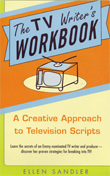Services
SPEC SCRIPT OF ON-AIR SHOW DEVELOPMENT
STORY DEVELOPMENT CONSULTATION
What Happens:
You submit your spec episode story idea in synopsis form*. I read, analyze and make notes, then we meet and go over your story in detail.
*Prep Template provided when you register.
Our Goals Are To:
- Mine your passion and find the story you really want to tell
- Discover how to tell that story more powerfully
- Create an effective premise line for your story
- Develop the spine for your story's structure
- Identify specific plot elements
- Ensure that your main character's emotional drive is central to your story
- Determine how the supporting characters can provide conflict
What You Get:
- A thorough analysis of your story
- Techniques to put your personal stamp on your project
- Guided exploration to build your story through character driven action
- A clear understanding of the basic structure of your story
90 minutes
$450
